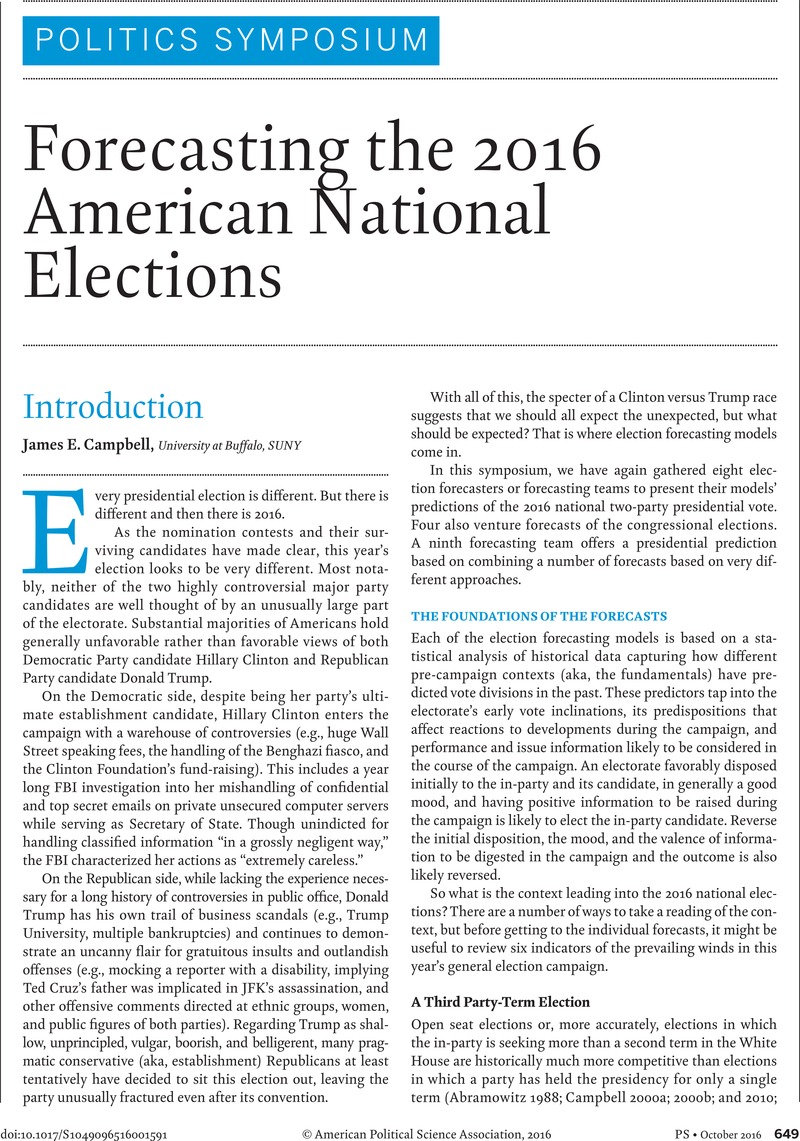Crossref Citations
This article has been cited by the following publications. This list is generated based on data provided by Crossref.
Victor, Jennifer Nicoll
2017.
Unraveling 2016: Comments on Gelman and Azari's 19 Things.
Statistics and Public Policy,
Vol. 4,
Issue. 1,
p.
1.
Godwin, Marcia L.
and
Foreman, Sean D.
2018.
The Roads to Congress 2016.
p.
391.
Lewis-Beck, Michael S.
and
Tien, Charles
2018.
Candidates and campaigns: How they alter election forecasts.
Electoral Studies,
Vol. 54,
Issue. ,
p.
303.



